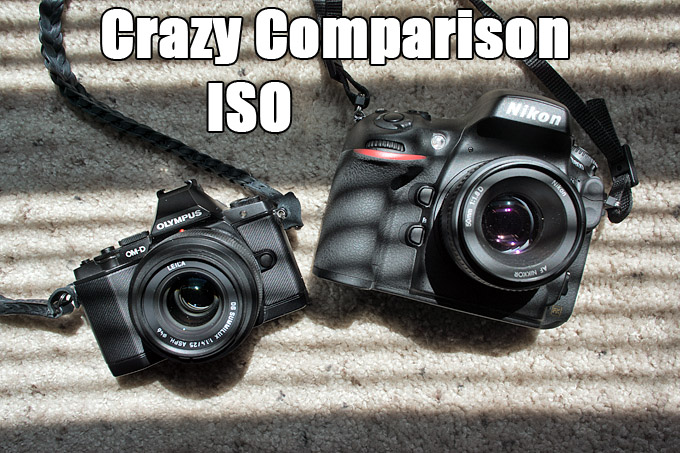
Crazy Comparison! The Olympus OM-D E-M5 vs Nikon D800 vs Leica X2 for High ISO
I know, I know..I have been having way too much fun lately with all of these comparisons, new cameras, new lenses and reviews. So much here to do but I still like to do these “just for fun” side by sides. Stuck at home all morning I thought..”wouldn’t it be amazing if the OM-D E-M5 could even come close to the full frame D800 or APS-C Leica X2 for higher ISO performance”? I have been shooting the OM-D when I can and have been marveling at how far Micro 4/3 have come in regards to higher ISO performance. The PEN models are OK up to 1600 but even then it can get a bit mottled and mushy at times.
The Nikon D800 is a full frame marvel with all of the latest tech and of course, gorgeous IQ. I have not had the time to concentrate fully on the D800 but what I have shot so far with it and the Zeiss 35 1.4 has been some of the nicest and richest files I have had through my computer to date. I will have a short write-up and “my thoughts” of the D800 soon and even though I am not a DSLR shooter anymore, I find the D800 to put out beautiful quality. It’s basically like a medium format camera IMO.
[ad#Adsense Blog Sq Embed Image]
But I will save that for another day. Right now I just wanted to post some high ISO samples from the D800, Leica X2 and OM-D E-M5, with the D800 and Olympus using a 50mm lens (or equiv). The little Olympus does not do better than the D800 of course nor does it even do as well BUT it is not too far off! The X2 is of course using its built in 24 2.8 which is a 35 equiv, but this is not a sharpness, detail or bokeh test – it is a noise test. So let us take a look..
First, the simple image of my vacuum cleaner in my living room
–
and the crops are below, each one has the text embedded to tell you what it is but first set up is at ISO 3200
The D800 is smoother and cleaner but the OM-D is not doing so bad here at all for being a much smaller sensor. Lens used on the D800 is the Nikon 50 1.4 and the OM-D has the Panasonic 25 1.4 – all shot at f/2
Here is what gets me scratching my head. In my review of the X2 I have found that anytime you shoot at ISO 3200, even if you convert the RAW and use ZERO Noise Reduction you still get details smearing. This does not happen at ISO 6400 or 12,500, only 3200. You can see the X2 crop below is smeared and blurred from in camera NR that is even applied to the RAW file when you do not want it there.
–
now let’s take a look at ISO 6400
These are crops from direct RAW files. No editing, no NR, no enhancements. Just opened the RAW files in Adobe Camera Raw and cropped.
and here is the X2 at 6400 and as you can see, no smearing of details. You can also see the way the Leica renders the yellow differently than the others. The Leica will also have more DOF here so just look at the noise, which is what this test is about.
–
How about 12,800?
The OM-D starts to get noisier here but this is 12,800. The D800 is also much noisier here but they aren’t as far off as I would have thought.
–
OK, dare I even try ISO 25,600 on the OM-D?
First of all I have to say that this was done as a “just for fun” Crazy Comparison, and it is indeed crazy as the D800 is known as a full frame masterpiece with great low light capabilities (though I believe the 5DIII is better in this area). Still, a full frame technological super force against a little micro 4/3 camera, who in the past had a rep for awful low light performance..well..that is pretty crazy. While the OM-D did not meet or beat the D800 here it came damn close, and to me that is impressive. I have to say that the more I shoot the OM-D E-M5 the more I love it. It really is the BEST Micro 4/3 to come along to date. I have not really heard from anyone who has bought one and disliked it.
As for the X2, it also has a larger sensor than the OM-D but it appears it performed about the same noise wise though you can clearly see the Leica color signature coming through. Again, all were RAW files with ZERO NR added. Not sure what is happening with that X2 ISO 3200 noise but it is smearing at that ISO even though I took away any and all NR. I can state that I really am enjoying the Leica X2 AND the OM-D. The D800 is not for me but if you are a DSLR guy, it is the real deal.
BTW, as I stated in my OM-D review..if you buy one I highly recommend the grip and a decent lens (12mm, 14mm, 20, 25, 45) as the glass makes all the difference in the world.

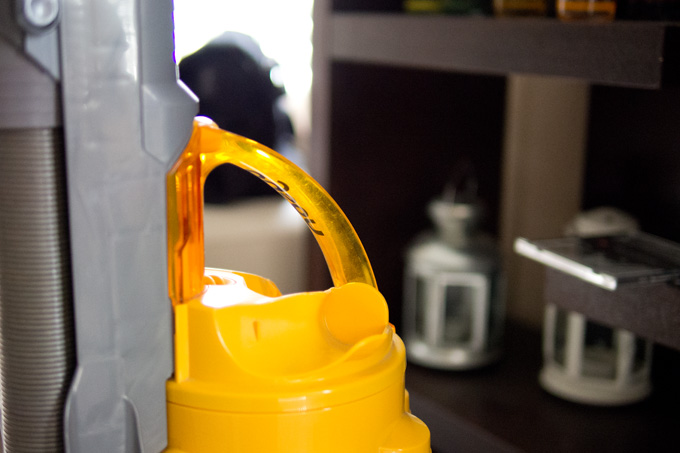
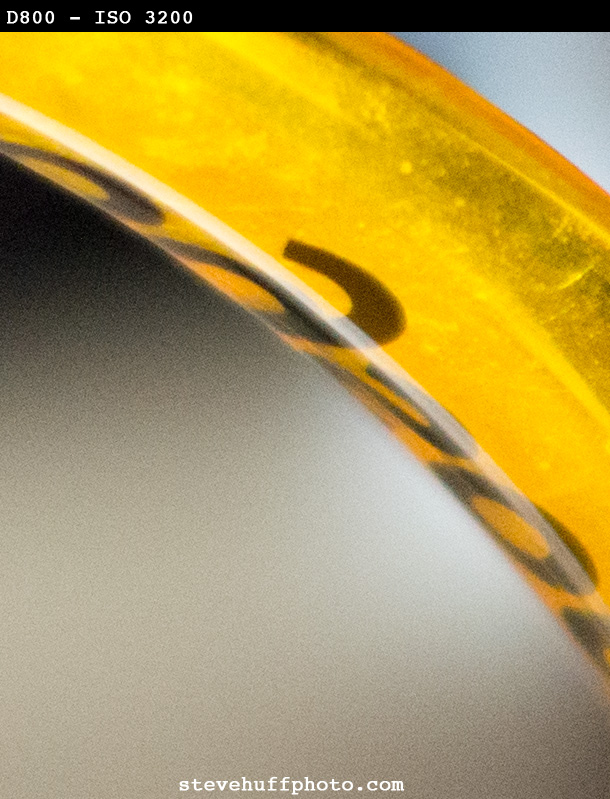
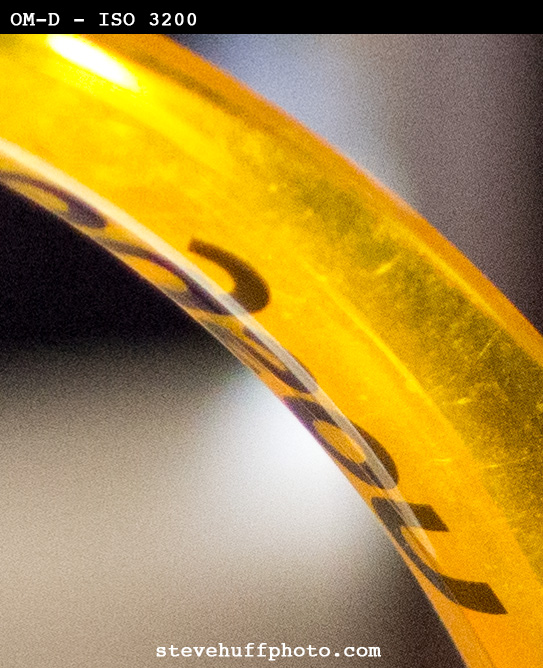
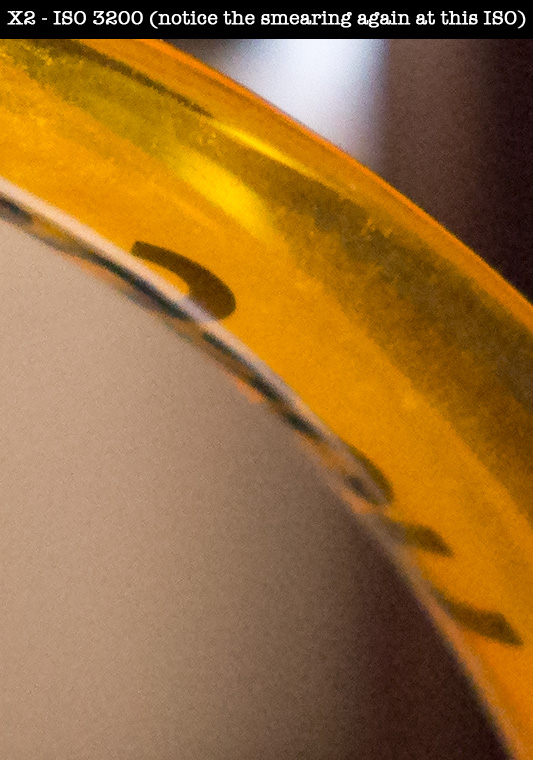
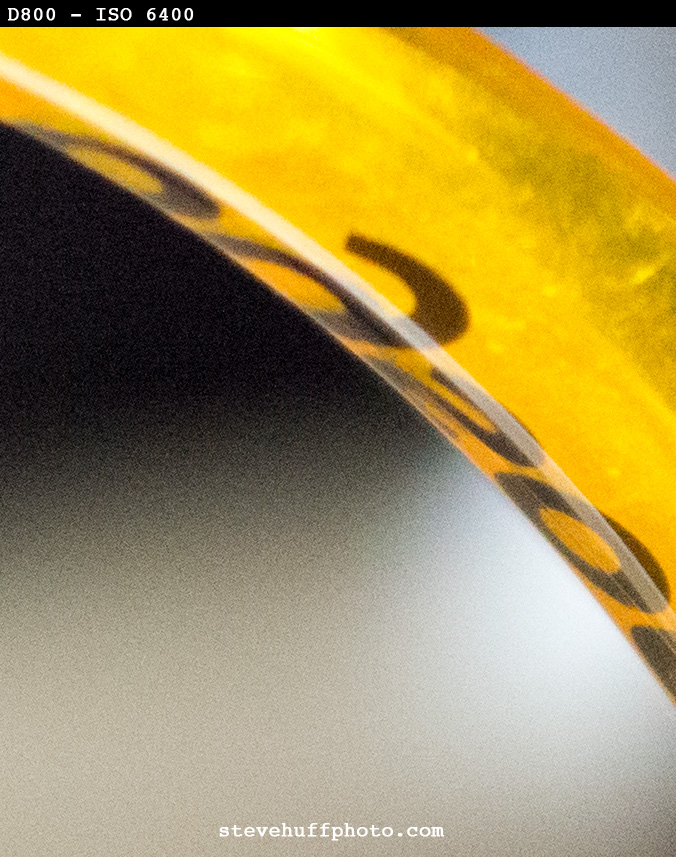
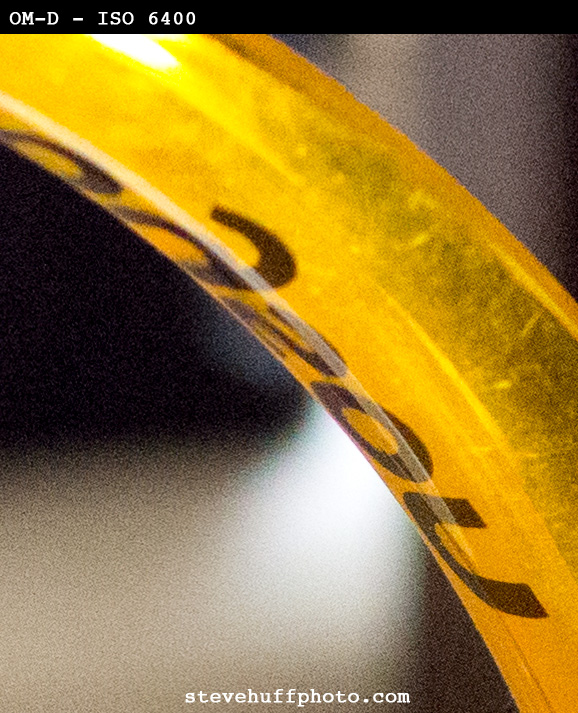
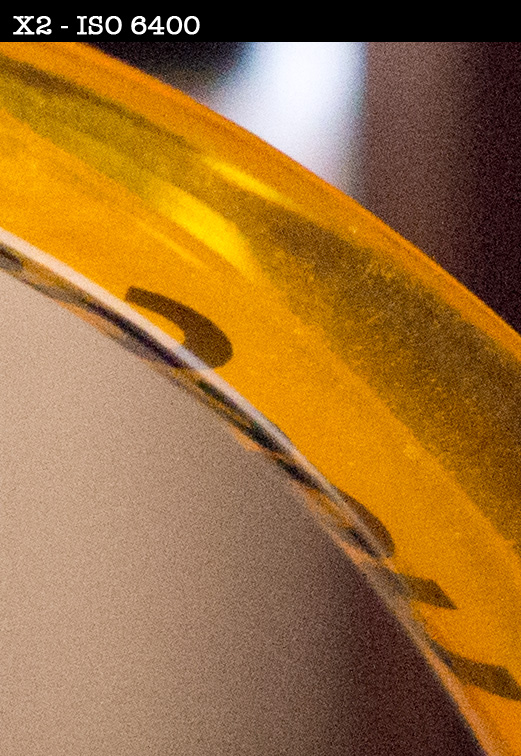
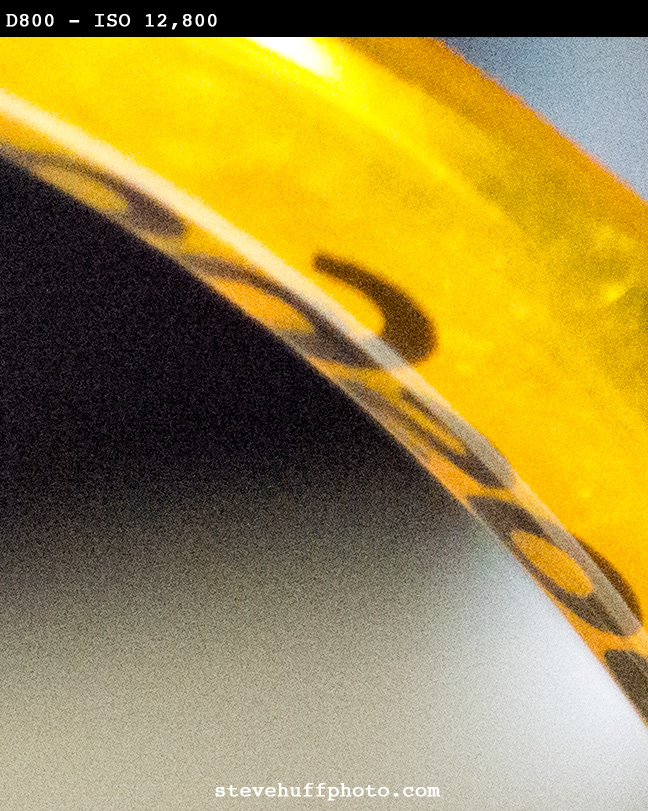
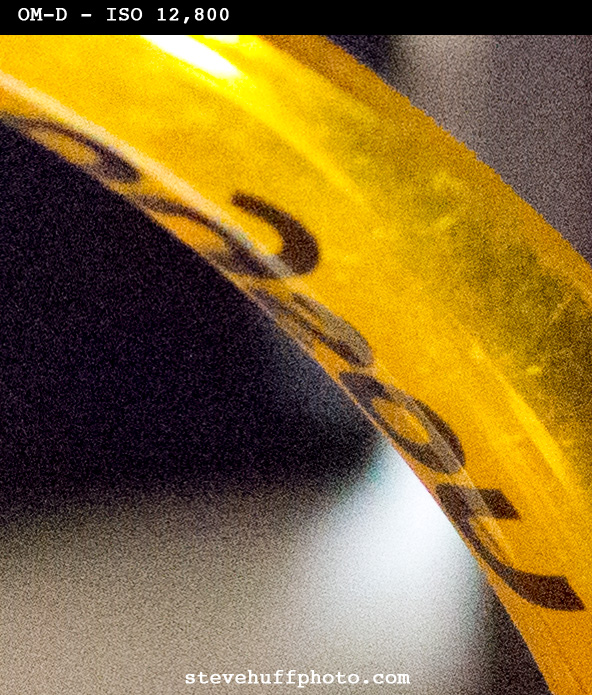
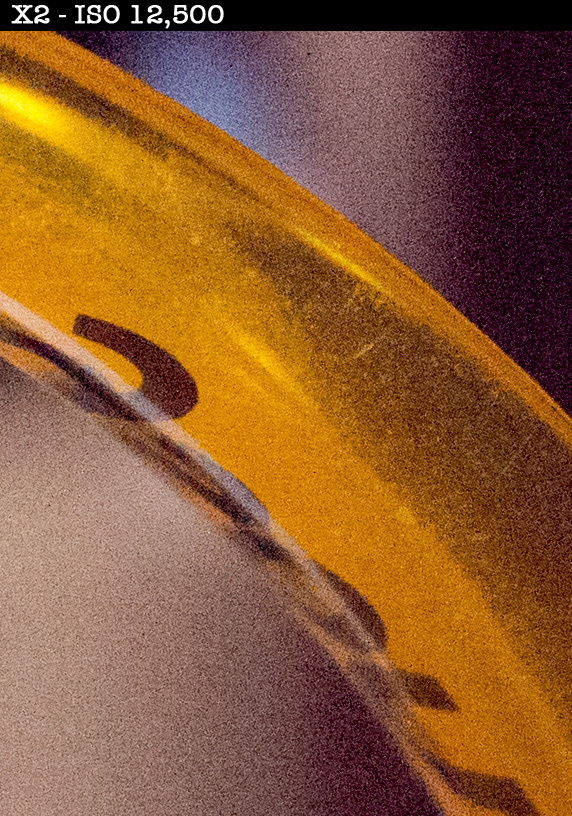
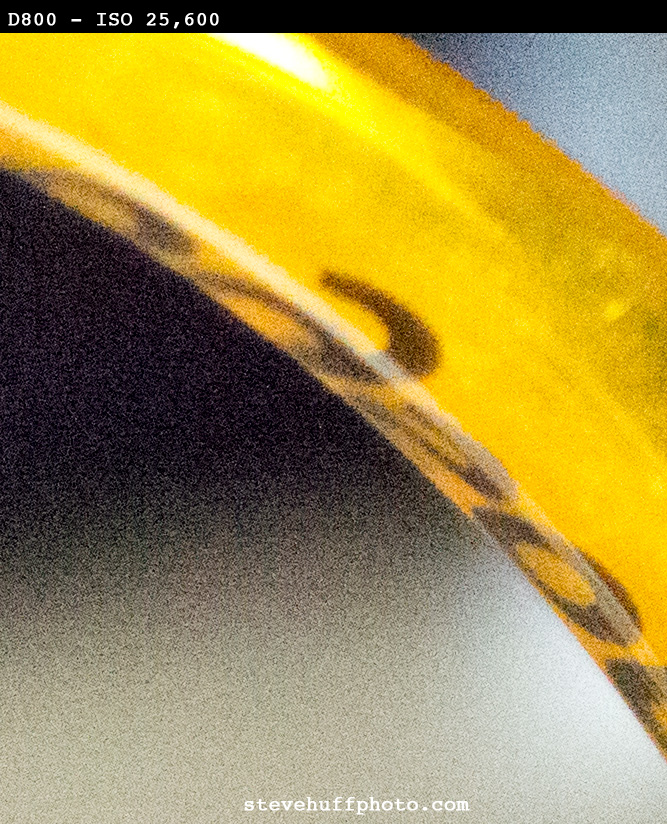
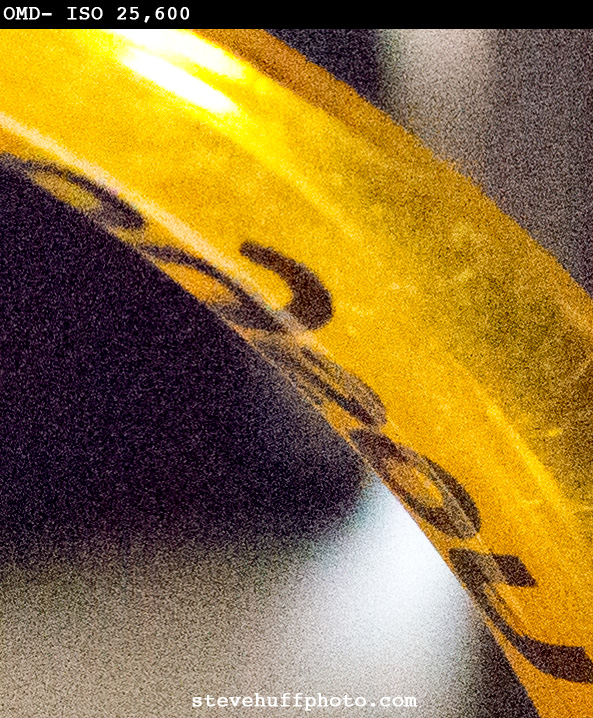

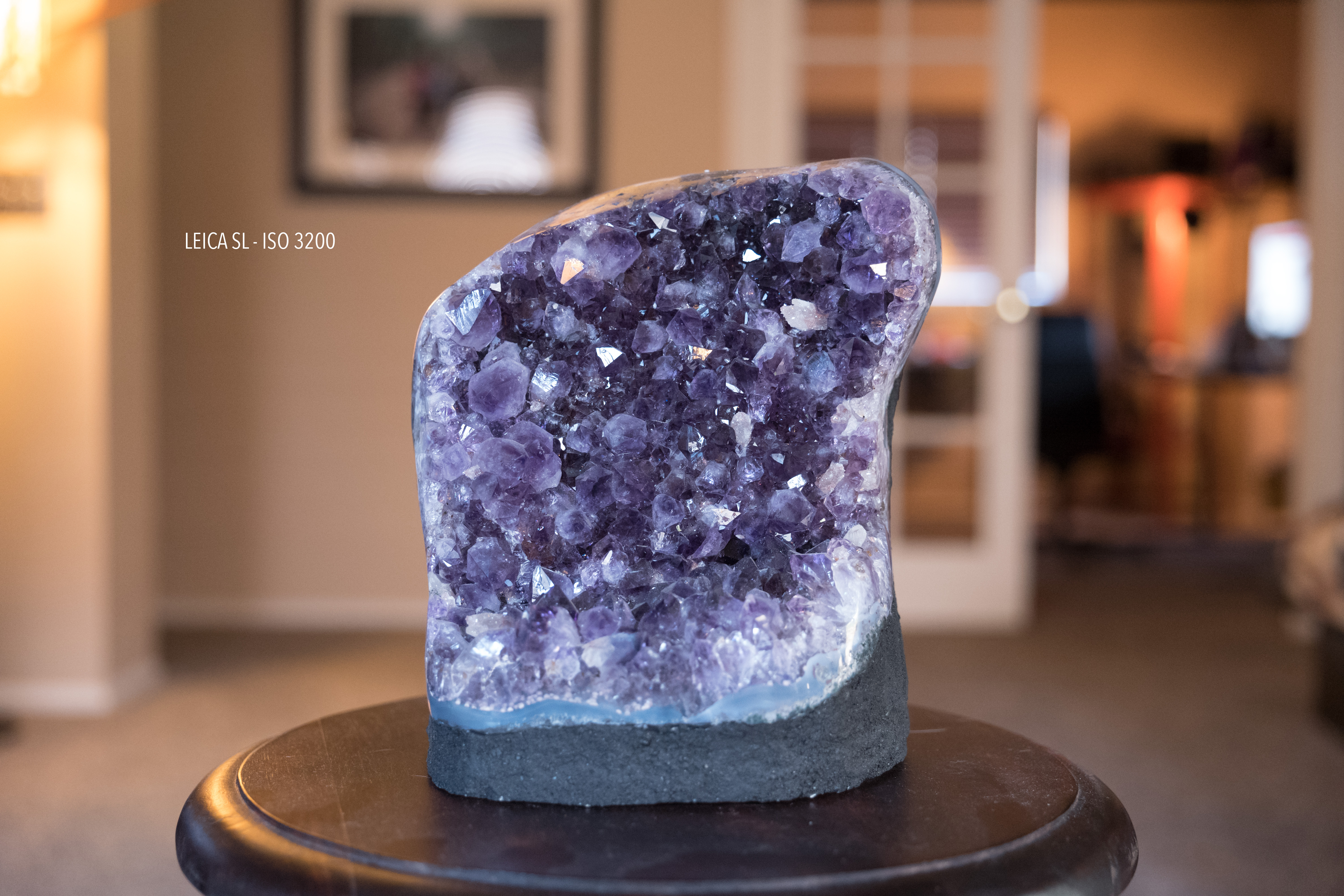
I recently did a comparison of OMD-EM10 and A7 and my results are very similar. A7 does better in low light but not by a lot. I was quite surprised. If I look at Dxo mark they have a major gap between A7 and OMD sensor for ISO but I am not seeing it? I thought the A7 would just blow OMD out of the water but not the case…Not just a crazy comparison but its driving me crazy!
http://www.dxomark.com/Cameras/Compare/Side-by-side/Olympus-OM-D-E-M10-versus-Sony-A7-versus-Canon-EOS-5D-Mark-III___937_916_795#toggleBookmarks
I’m late to this party, but have been using my trusty D7000, D600 and D800E since each was introduced, and since March this year, the OM-D. Yesterday, I ran a head to head test of the D800E and OM-D in a stacked focus image, on the same bellows and flower with the same Apo Rodagon lens, shot to RAW. The Nikon’s images, imported as DNGs, bring my i7 processor and 16 GB RAM to their knees and each file is over 70 MB. Processing that stack from importation to final stacking took over 2 hours. The Oly’s RAW files loaded and processed to DNGs within seconds, and the stacking process took just a few minutes. And get this, the OM-D stacked image, while it’s a little noisier than the Nikon’s, looks better! Holy moly.
I also do long days of photojournalism from time to time, and know from experience something that camera tests never mention, by the end of 12 hours carrying full size DSLRs and appropriate glass such as the 17-35 2.8, 28-70 2.8, 80-200 2.8, and 200-500 Tamron, you’re less likely to move far to get a better shot. Replacing the big, fast Nikon short lenses with the superb Olympus/Panasonic ones, then using the 200-500 on an adapter, gives me even greater reach and capability in a far lighter package. It does make a difference. What a camera this little Olympus is!
I’ve been invited to embed with an infantry unit going to Afghanistan next year. Whether I can do it at my age remains to be seen, but I’m building photo gear in that direction. Guess what system that will be!
BTW, as I stated in my OM-D review..if you buy one I highly recommend the grip and a decent lens (12mm, 14mm, 20, 25, 45) as the glass makes all the difference in the world.
Does the Olympus 17mm 1.8 count?
The om-d is ok till 12.800 the black is more black, impressive no ? I am a jpeg user 😀
Strangely, I think I’d buy an OM-D E-M5 right now if it was just a little larger. I haven’t had the opportunity to handle one as we don’t have an Olympus dealer where I live in northern Canada, but all the videos and images I’ve seen suggest that it would be a little too small for my hands. I picked up a NEX-7 the other day and found it to be too short to hold comfortably. While small is good, tiny not so much, at least for me.
I was a little afraid of that too, but have not found it to be the case.
Adding the (sadly, much too expensive) battery holder/grip makes it just right, for me.
I’ve also heard that a third-party company is bringing out a much less expensive grip.
The D800 High ISO score on DxOMark was an amazing 2835 ISO. To put that number in perspective, an excellent APS-C camera like the Pentax K-5 scored 1162 ISO, similar to the D7000 with which it shares a sensor. The OM-D hasn’t been tested there yet, but my guess is it will score somewhere around 900 ISO. The Panasonic GX1 which shares a sensor with the OM-D scored 703 ISO, and Olympus has done a great job tweaking the 16 mp LiveMOS sensor, but it still will not equal the best of the APS-C sensors.
Nice test, cool website, Steve.
The OM-D shots are impressive. Definitely noisier than the D800, but the nasty chroma noise is actually pretty low. Very usable.
Steve, I have really enjoyed your blog. I am in Phoenix too. Maybe we can get together sometime! Keep up the good work!
Dave
Cool stuff – it’s a nice little camera, and fantastic performance. Steve, I just got a D800 and what you can do with the shadows is a miracle – waaaay better than my 5DmkII (and evidently better the than the mkIII too, at least in that area) – you can push with no noise penalty a huge amount and in RAW you’d have a hard time blowing a highlight…
…anyway, on the m4/3 cams of which I have a few – if you get exposure right, all is well – in RAW, how is it performing if you have do a lot of manipulation (like get a cloud pulled back, etc.)? My experience is that they fall apart pretty quickly (albeit the metering on the Oly’s is terrific)…but how about in tough edits?
Hi Doug, just wondering which m43s you have. I had a E-PM1 and have a GH2 and recently acquired a OM-D. Frankly, in terms of DR and being able to push the shadows – it’s a massive step up.
I don’t expect it to be as capable of the D800, and quite frankly, I think my good old D700 still delivers much cleaner raws once you reach 1600 (this is a feeling, I’ve never done a proper test) – but it is simply amazing given size difference.
To me, all cameras are choices about flexibility and compromise. The OM-D offers wonderful image quality for and gives flexibility of size and weight, at the compromise of not the best IQ. D800 and similar offer amazing IQ and gives flexibility with IQ and pushing and pulling raws, but at the compromise of size and weight.
When I had the GH2 and E-PM1 to become my travel cameras, yet I always still took the D700 with me when I left. I just couldn’t bear the thought of not having the highest IQ camera I owned with me if a shot came up. Now, with the OM-D and a bag of light lenses, I think it’s finally time to let the D700 rest next time I jump on a plane!
The GH2 and the EPL3 are in my stable. The GH2 is okay, the EPL3 has noise at base ISO (as I am sure you know)…of the two the GH2 I was able to push more (however I have a heck of a time with the Panasonic color rendering, even in RAW).
I don’t expect them to be D800 good – but I really like the Oly as a fun cam. I have never warmed up to the Panasonic for whatever reason.
DS
I must say that the OM-D is the biggest surprise I’ve had with photographic gear…it’s just amazing!
I have a M9 and M6 and also a 5D mark II but I’m almost using only the OM-D in the last weeks.
Just arrived from a trip to Denmark and when downloading the RAW files I was amazed by some high ISO results…they are all very usable.
It’s not better then the M9 or the 5D but with the good lenses available it will give great results.
When I recently bought the OMD I decided against the kit zoom as it not fast an relatively long. Olympus/Panasonic will soon come with new and fast zoom lenses if they are aware of the customers’ demands.
For the time beeing I bought the M.Zuiko 12mm 1:2.0 and a Novoflex-Adapter for my legacy lenses (Minolta MD 50mm 1:1.4 and MD 200mm 1:4). The M.Zuiko is amazingly sharp at 2.0 and also the MD lenses do a better job than I expected.
You can have a look at some images on my Flickr side. The images are sometimes cropped a little bit but no other post-processing was applied, just the out-of-the-camera result.
http://www.flickr.com/photos/79688720@N07/
Cheers, Wolfgang.
Your test confirms my findings as well, between OMD and full frame it is really hard to compare the difference in IQ with the difference in cost, weight and size. The former is becoming barely relevant while the latter is significant.
i rarely go above 1600 iso
Why are the crops of the d800 always closer than the olympus? Of course the image quality will degrade when you crop closer? why not just crop 500% on the d800 photos and dont even bother cropping the olympus photos and say theyre the same and call it a day? Seems to smell a little fishy to me. How can you compare something to another when the variables and parameters are not even the same?
The elephant (NOT) in the room is the X100. If you are saying that the OMD is best with a prime lens (25mm etc) then how is it better than a X100? Only advantage then would be the flip out lcd (which would be handy) and faster af (I assume – although the Fuji is now pretty good). Of course you can also change lenses but if you see a shot and then have to change lens you may miss the shot. For me the Oly would be attractive with a small zoom (14-45 or 12-50). Would like to see images from these lenses. Otherwise the Fuji has cleaner high ISO (see Imaging Resource Comparometer) and top image quality. Why did you ditch your X100 Steve?
Of course the om-d iso’s are the best….if you crop the other photos more closely than the olympus. Hahaha………..ha.
“Of course you can also change lenses but if you see a shot and then have to change lens you may miss the shot.”
The ability to change lenses is still a huge gain here. Normally, I think about what kind of shooting I expect to be doing and the environment. So, I can prepare the right lens for the job. In the case an unexpected shot suddenly presents itself – if time permits, you can change lens. If time doesn’t, no worse the X100. But, unlike the X100, I can prepare for a portraiture shoot with the 45mm 1.8, or, say a group shot, 20mm 1.7. Also, if I need total flexibility, I can change to a super zoom lens (and a good compromise coming with the new constant aperture Panasonics).
The x100 is an interesting camera for what it is, and is great for some people – but it doesn’t have the flexibility in a system with interchangeable lenses.
Hi Steve,
Thanks for the comparo–very nutty and yes, both fun and informative.
It’s true–the E-M5 is the camera that announces µ4/3 has finally “arrived” and the latest round of lens releases only reinforces the point. I just received mine and am pretty stoked with 95% of it, so far (it’s my first Micro camera). And now with a box of lens adapters I also just received, I’m planning on having a blast using various legacy lenses with it.
Am still scratching my head over how dinky this camera is in person (never had a chance to hold one before ordering it). So, what’s Panny’s response going to be?
The OMD comes out 2nd here, as you would expect, but if you had included an Olympus camera from the last generation, an E-P2 or E-PL2, it would be clear that Olympus has made a HUGE improvement at high ISO.
The OMD is in a different league from its ancestors, and easily as good or better than many recent APS-C dslrs.
OMD holds its own I would rarely use over iso 160 400 at most 800 rarely then again I have a load of super fast glass I really don’t see the need for using this high of iso but I guess I’m old and old school lol,
I agree..I RARELY use anything over 800 with any camera so to me, having high ISO capability is nice but not mandatory.
To me, the REALLY crazy thing about this comparison is the opening picture of the OM-D and the D800 side by side 🙂 Wow, what a difference !! To most people, size/ergonomics – and the price – should be the deciding factor – not image quality at extreme high ISO.
BTW, I handled the OM-D briefly the other day – lots of them available here in Copenhagen – and I was a bit underwhelmed by the viewfinder (I’m used to Leica M and various film SLR’s) as well as the body ergonomics. It felt a bit too small and boxy for me, so the grip would probably have helped. Oh, and I didn’t like the 12-50 zoom, either – I much preferred the zoom action of the cheaper 14-42 M.Zuiko. And If you want a really compact “SLR” to take everywhere, the 12-50 is far too long for comfort. IMHO, of course 🙂
I agree. Forget the noise comparison. The opening side by side comparison of the two cameras makes the D800 look like medium format . It looks enormous!
I appreciate your non-scientific approach with real life photos instead of the usual brick walls and meaningless diagrams that only professional lens designers can interpret correctly anyway.
But I do have a question for you: When you did this test, did you set the ISO and let the camera choose the exposure or did yo check that the exposure was the same on all cameras.
For me, this is quite important because different manufacturers have different definitions of how to determine the sensitivity (and there is no clear definition anyway). My experience is that Nikon is very restrictive about it, whereas Olympus tend to indicate a higher ISO.
It would be interesting to know what shutter speed and f-stop you used in each photo.
I ALWAYS set ISO and let the camera choose exposure, ALWAYS. Why? Because someone who buys an OM-D and uses it in real life will not try to set the shutter speed to what a X2 or D800 or NEX would choose. They will use the OM-D and let it choose exposure. So what you see here is what each camera chose for it’s exposure. Seeing that different manufacturers do indeed rate sensitivity differently, it would be unfair to match shutter speed and ISO as each camera would produce a different result.
This test was done for high ISO noise only. Not sharpness, not bokeh, not detail, not color, etc. Just noise as each camera injected it into the image at each ISO. Each camera read the light in its own way so the result you see here is the kind of results you will see with each camera in the real world. Thanks
I understand what you mean. But if we assume (and for the moment this is just an assumption) that the olympus isn’t as sensitive as the ISO-indication suggests, don’t you think that the test could be misleading?
I mean, the reader going through these images may say to himself: -Ok, the OM-D is almost as good as the Nikon with its full frame sensor; -I.E if the two cameras are used in the same situation to take the same image, the images from the Oly will be as noise free as the ones from the D800.
But if the Oly requires half the shutterspeed to achieve this….then they are not comparable at all.
You don’t have to agree, but do you understand what I mean?
Will you allow me to be a bit provocative?
If yes, let us assume that the manufacturer of a rather lousy compact camera suddenly desides to change the display of the ISO-value on the camera: Instead of showing ISO 100 on the screen (or the exif), they decide to show ISO 1600. No problem here, it’s just a number, right…
The camera will do extremely well in tests (until someone realizes that the shutterspeed is 4 stops longer and that the sensor is in fact gathering 16 times more light), but in real life it will be as lousy as it has always been…
Do you see the problem?
DXO tests, which really are proper tests of sensors, caters for this very problem. There are a lot of sites doing ISO comparison tests but DXO are the only ones doing a credible job at it. Obviously they are almost useless for anything else like what a camera is actually like to use, but in their area of expertise they are the bible.
Great little test Steve. Insightful as always.
I absolutely LOVE my OM-D paired with the 25 2.4, and the 45 1.8 is no slouch. Noise wise, I would say that I’ve noticed a bit of extra shadow-noise in lower light shots, but that hasn’t taken away from the joy of using it.
When it comes to “color signature” though, isn’t this a matter of white balance? It might be interesting to know/show if there are certain tonalities you just can’t achieve on one camera that you clearly can on the other. I imagine that with the right curves in photoshop, you can pretty much replicate the Leica color signature on a raw image taken from any of these cameras couldn’t you?
It would be much more interesting to see how they render skin tones at basic iso instead of crazy iso…
Thanks Steve, your crazy “comparison” proves a very important point. You just compared different cameras from a wide price range and weight, etc. yet, when it’s all said and done, the photos look very similar… Bottom line: we are getting so bogged down with technical stuff that we keep forgetting the essence of what photography is all about. We all know this but we keep forgetting it: a “good” camera does not make a good photographer, and really, technical specs reach a point where marginal differences don’t really matter. Good photography is more about the composition, the artistic rendition, the soul behind the shot and has very little to do with ISOs, speed and/or how noisy the camera is.
The camera is just a tool that enables a photographer, any photographer, whichever his or her level, to capture a scene as an artistic rendition of a moment in time, a snapshot of something that after you take the shot is gone forever, be that your family, the old man down the street, the old building, the country side scene you love so much, your grandpa’s sailboat, the birds, the old bridge, whatever. Weather the camera in your hands costs $15,000 or $500, or has more or less noise at x-million ISOs or blah blah blah it’s really not relevant or it shouldn’t be as important as it is made to be.
Some of the best pictures from the best world renowned photographers have been taken with lesser technical cameras that the ones we are reviewing nowadays and yet, the fact that they had only but a fraction of the technical capabilities of the cameras we are fortunate to enjoy these days did not prevent them from capturing those wonderful shots.
I say this with respect and hope that we all take a deep breath and come to terms with what’s really important in photography and stop bickering about useless stuff. Pick a good camera, one that feels comfortable and good in your hands, one that feels the right weight, one that appeals to you for whatever reason and go out and take pictures. Enjoy life and photography and stop suffering about technical specs and new cameras coming out every three months or so just in time for the new camera show on every corner of the world.
Well said! Fully agreed.
I nearly bought the OMD but was wanting something small and it looked to me to be closer to a full dslr than the GX1 I did buy… however I might get the OMD as a second body and get rid of the Nikon stuff…
The OM-D is tiny..especially without the grip where it is about the same size as the GX1 (but a much better performer all the way around). – can’t recommend it enough.
I have both cameras…and I love both of them. I also think the GX1 is a smaller and lighter camera in actual use. So you probably made the right choice for your needs. I have big hands..and for me the OM-D HAS to have the top half of the grip on it to handle well, or I am constantly pushing the soft buttons, inadvertently. (I think this handling issue also has to do with the weight of the camera…it is heavy for its size, which speaks to the excellent build quality). The GX1 on the other hand is, for me, a much simpler, more programable to the individual, smaller, lighter camera, which handles very well with no accidental button pushing. (This has to do with the lightness of the camera, and the design and quality of the buttons). I also think that the GX1 has a better, more intuitive, touch-screen interface (which I use only for reviewing images and the extra fn buttons). The GX1 with the 14mm or 20mm is an extremely light and thin package with the LVF2 it can be taken apart and made smaller if need be for travel.
The OM-D offers some slight improvements in image quality, frame rates etc. …and is also an impressive performer….I LOVE both cameras. …but I have to say that the GX1 is MUCH more pocketable than the OM-D even with the LVF2. If you have both cameras in front of you and handle them…I think you will agree.
This is really useful, especially since I seem to be shooting very low light lately!
Steve…thanks as always for a great site and a great read.
Is it just me or do the OM-D shots look actually better than the D800 ones? Sure there’s a bit more grain, but as someone else pointed out, it’s a bit more visually appealing, if you are going to have grain in the first place at such high ISO’s. Plus the OM-D high ISO shots appear to retain more detail than even the D800 ones…the D800 ones seem to exhibit more smearing of details to reduce noise. And the colors look better on the OM-D samples…more contrast.
Overall I must say the OM-D is one great performer…no doubt that the D800 is as well, but just like in computers, the performance gap between different price points/classes of machines is shrinking for most practical purposes.
The chance of the OM-D getting within 1 stop, let alone matching a D800, is zero. Physics in pure sensor size give the D800 a 2 stop head start, and the sensor tech in the D800 ain’t bad enough to give too much up.
There are plenty of full size samples from both OMD and D800 around. Take a close look at the best samples from both cameras and you will know that OMD is not even a close match to the IQ of the D800.
I think the OM-D does get close to the image quality of the Nikon D800. Probably uncomfortably close for some D800 users.
I do agree a 100%, and I think those denying the OM-D is very close to D800 should take a pick at imaging Resource comparometer. Try both cameras at IDO 6400, and you won’t notice any difference. Trully amazing (http://www.imaging-resource.com/IMCOMP/COMPS01.HTM)
The letter at 12 something ISO on the X2 are pretty sharp, better than the nikon or the olympus !
These quick tests would be a lot more valuable if the crops were resized to reflect the resolution of the sensors, so we’re comparing the same print size with the same portion cropped out of that print. Maybe resize each image to a 10×15 print and crop out an a couple of inches square from each?
Comparing noise at the pixel level is a bit meaningless. I’m kind of surprised this concept hasn’t sunk in yet.
As always…when I do ISO crops I show what comes out of each camera. Period. A 100% crop is just that, a 100% crop from a full size file. Not everyone will print at your size and not everyone wants to see what comes from a resized file.
Since day one I’ve shown what comes from each camera .. I am surprised that hasn’t sink it for you yet.
Thx
I shouldn’t have added that comment about sinking in yet, I apologize. My point isn’t about a particular print size, but that people don’t print photos at different sizes depending on the megapixels of their camera. Enough from me about this topic already though, I do really your site, probably my favorite photo blog. Cheers.
As these are 100% comparisons of what comes out of the camera, the Olympus OMD E-M5 is at an advantage both in terms of apparent resolution and noise, vs. the D800. This is really more of a test of sensor technology than how well a camera can produce results when comparing final print sizes.
The same kind of comparison could be made of the Olympus OM-D E-5 vs. an IQ180 medium-format back, comparing resolution and noise at 100% out of camera…but everyone knows that to produce an equivalent-sized print, results from the OM-D would have to be enlarged far more than those from the IQ180.
I will say it again. No need to be nasty to your readers, you are better than that.
The 20 f1.7 does really well on the EM5. Better than the 3 other m43 bodies I’ve tried (G2,EPL1,EP3). It feels just fine for most things I’ve done with it. The 14 and 45 are better, but it’s not such a difference that makes the 20 feel useless or problematic.
Here’s another vote for the 20mm on the OMD. I’ve read about people having issues focusing issues with this combination, but I have not.
For me, the 20mm focuses quickly and reliably. I have the 25mm f1.4 also, and it makes a somewhat prettier image, but is very large and heavy.
Which one I use depends on what I’m shooting, and what the final output will be.
I’m ready to put down something like “this is so unrealistic BS comparison, the Nikon is so much better and the images are not even scaled to same mag!” and see how many replies I can troll up! 😀
I’m really impressed by the OMD in the crazy comparison and now you have me reaching for my wallet again… damn you Steve!
Simply WOW!!! Great test and fun. You’re going to have folks squealing like a pig over this test. Can ‘t wait to go over to the other forums to witness the angst. The OMD is simply amazing. I purchased the X100 over the OMD and don’t regret this choice….But!
Regards,
H
PS Great Reviewer and review. Two cameras purchased on your studies.
The OMD looks really film like at ISO3200, still sharp, but that grain really gives the photo character.
And the D800 reaches the same film grain look at ISO6400.
I like this test because it shows us that purposely using ISO3200 on the OMD will give us a more film like look to pics, especially in B&W with no loss of quality.
Just got my OMD in the mail today. Tonight I will set it up. Excited!
My thoughts exactly.
I think that Steve is a salesman fra Oly, incognito. And that is meant in a positive way.
Great stuff as always Steve. Keep them coming, I love your crazy comparisons.
How do you think the D800 vs the OM-D would compare at print sizes of A3 at iso 800 or less ?.
Looks like the D800 is about one stop better than the OMD. That seems logical considering the pixel density on the OMD is about twice as high as on the D800. The X2 images are difficult to judge because I am always looking at the letters which only appear sharp on the X2. But noise-wise it seems to be on par with the OMD, maybe a slight bit better.
The OMD is pretty awesome in this regard. Its also slightly better at high ISO than my NEX-3 which features an APS-C sensor and isn’t even that old! I am planning to switch to the OMD and use it with my Voigtländer 35mm f/1.2 lens. Due to the 2x crop factor I am also thinking of buying the 20mm f/1.7 lens, although I am worried about the AF performance … usually I love manual focus, but that isnt much fun with focus-by-wire.
See message #19 below. Sorry goofed up on the iPad.
I just got a D800 and the DR is off the charts. That’s where it really shined. I took a picture at iso 100 and pushed it nearly 1.5 stops and had no loss of detail. Truly impressive.
My hat of off to Olympus. As much as I would want an X2 or GXR (Ricoh fell asleep a bit there), the OM-D is a great camera and with the lenses available it is VERY hard to resist.
Nice for the m43 bunch. As a well known swedish camera reviewer pointed out that the the last few years cameras cold be good enough for many years to come. That could mean that we might keep our cameras long enough to get to really know them 😉
Great!
Hey Steve! How about a Mk3 vs. D800 high ISO match up?
Or even better, a Mk3 v. D800E v. M9 low ISO match up?
Well, I would if I had a MkIII here and I didn’t have to return the D800 tomorrow.
Rats … oh well. Thanks for the thought! 🙂
Why is never an M9(p) in these crazy tests? Return policy or sacred cow?
The M9 is not really a big standard for high ISO, but I would like to see some comparison with the Fuji XPRO1
That would mean all 3 cameras much be using the same optics to be fair… which can be tricky, and crazy!
Easy. Results will be from best to worst: D800, 5DIII, M9.
Exactly. DXO settled this a while ago with a proper comparison of the sensors.
I wonder if Olympus could build a camera with 4 16mp sensors to give FF dimensions (and stitching images with in-camera software): that gives 64mp of FF sensor. Is it doable?
Sure, but then you couldn’t use any 4/3 lenses, since they don’t project onto an are of that size.
but how then their current lens going to work on this new larger sensor, the image circle of their current line up lens are small and design for m4/3, they have to make larger lens with larger FF image circle which result unfeasible and Olympus is all about m4/3 lens and camera system, if you want FF go to Canikon.
yes, and with an om mount… one can dream.
I Would love to own that camera but I don’t think I would like what it would do to all that great cheap Zuiko glass. Look at what mft did to pen f lenses! Ouch
My wife has had her OM-D for a little over three weeks, and it beats the rest of our cameras with ease, even highly lauded K-5s!
The E-M5 is a truly phenomenal camera, it is easily the best Olympus digital FT/MFT camera ever made. Like you, each day I enjoy shooting with it more and more.
Excellent comparison, would be nice to see the x1pro in the running for high ISO comparisons as is supposed to be even better than OM-D
Hi steve,
What do u prefer? The V1 or the Olympus
Well, due to the glass I have to say Olympus. It has the speed and metering of the V1 with the faster glass available. I still like the V1 body style and build though and find it a fantastic camera.
That OM-D is very impressive indeed, everything you showed about that cam is all positive.
Steve, I have had my EM-5 now for about two weeks. I am a long time 5Dii + L lens shooter, but I have sold those and gone the way of Olympus. I am not regretting the move one tiny bit!
I have yet to print anything large-ish from ISO3200 and up, but we’ll see how things go. I think that for web usage, ISO 6400 is no problem, as long as you don’t crop too much.
Interesting review here. Thanks.
Max
Down Under
Absolutely love your crazy comparisons. That’s what I like about your site – non scientific and gently humerous, but with lots of good information. Top work again. My OM-D arrives tomorrow – cant wait.
Steve,
Thx again for this fun comparison, how ever I wander if you can do a comparison of DR between all those camera ,D800, X2, NEX7, and OM-D,. With Gradation OFF or Gradation Auto,.. I will surely apreciated if you can do that
+1
That was a fun one indeed. Interesting test